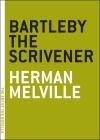 Libba Bray's first novel, the excellently titled A Great and Terrible Beauty, is basically a Victorian girls' school version of The Craft. Which is one of those things I didn't know I wanted, until I Really Really Did.
Libba Bray's first novel, the excellently titled A Great and Terrible Beauty, is basically a Victorian girls' school version of The Craft. Which is one of those things I didn't know I wanted, until I Really Really Did. It's the opening installment of a trilogy narrated by Gemma Doyle, whose mother's murder uproots her from her lifelong home in Bombay and lands her, unhappily, at Spence Academy outside London. Gemma makes friends with first her roommate Ann, a meek scholarship student for whom governess will be a step up from her parents' lot, and then, grudgingly, two popular girls--the beautiful Pippa, a merchant's daughter about to be married off to a Mr. Bumble forty years her senior, and Felicity Worthington, whose cruel exterior hides deep loneliness and frustration. All four girls yearn for something they can't have: Felicity for power, Pippa for true love, Ann for beauty, and Gemma, who discovered the day of her mother's death that she possesses frightening and seemingly uncontrollable occult powers, for normalcy. Led by a diary from two decades before, whose authoress bears a mysterious connection to a tragic fire that destroyed Spence's east wing, the girls begin to dabble in magic, finding their way to a fantasy world called the Realms. The freedom they find there is intoxicating; as Gemma says, "It isn't that we do what we want. It's that we're allowed to want at all." Of course, not all is at it seems, in the Realms or the real world, and dark forces slowly begin to reveal themselves. (Will have to read the next two books, Rebel Angels and The Sweet Far Thing, for the full arc.)
I quite enjoyed this novel, but I do have one big quibble--Bray repeats a couple of Oh Those Repressive Victorian tropes that are dubious, if not entirely spurious. For instance, while displaying one's ankles was inappropriate, certainly, it wouldn't have caused a scandal on the life-ruining level--though running naked through the woods, as the girls do in a scene eerily reminiscent of The Secret History, would probably come close. More worrisome to me is that she repeats the almost certainly false advice to marriageable daughters that they should "lie back and think of England" during sex; I'm not an historian, but a moment's research shows that the first written instance of this phrase is in a private journal from 1912, which is Edwardian. Had it been commonly used, wouldn't someone have used it, seriously or in mockery, before then, for instance in some of the Victorian's eras OCEANS of porn? Obviously, I'm not claiming that the Victorian era was not a period of extremely limited options for women, particularly as teenagers. Rather, it's precisely because of this, and the underlying parallels between the plights of these young women and the modern ones who read the book, for whom there are often still "no safe choices....Only other choices," that makes me wish she'd been more rigorous. (Also, must there be corsets on the covers of all three books? I prefer this Czech edition (which remembers Gemma's in mourning), or this awesome Dutch one.)














